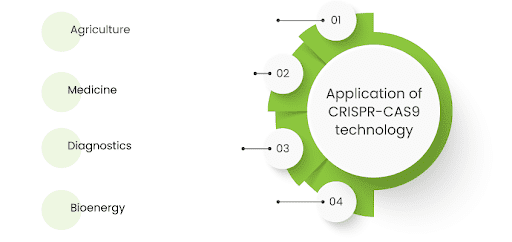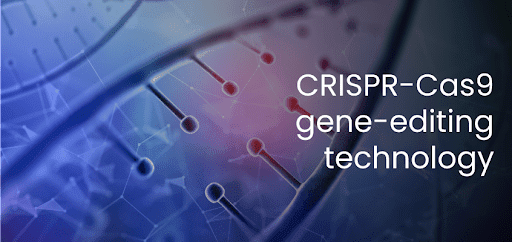Introduction
Recent advances in the field have paved the way for genome editing tools. D.N.A. of the genes in our body cells provides the side with the basis of our existence. As a result, they provide information on how our body functions and fights against bacteria and viruses. So genome editing involves altering the gene sequence to produce the desired effect. Let’s discuss the CRISPR-Cas9 genome editing technique and how it has helped humanity treat life-threatening illnesses.
Our Wellness Programs
What is CRISPR-CAS9?
CRISPR stands for Clustered Regularly Interspaced Short Palindromic Repeats, and CRISPR-Cas9 is CRISPR-associated protein 9. It is a genome editing technique where the introduction of strands of R.N.A. and a protein into the desired D.N.A. of humans or animals alter or replace the targeted D.N.A. Scientists consider it a very accurate, fast, efficient, and cheap genome editing method worldwide.
Looking for services related to this subject? Get in touch with these experts today!!
Experts

Banani Das Dhar

India
Wellness Expert
Experience: 7 years

Devika Gupta

India
Wellness Expert
Experience: 4 years

Trupti Rakesh valotia

India
Wellness Expert
Experience: 3 years

Sarvjeet Kumar Yadav

India
Wellness Expert
Experience: 15 years
What is the application of CRISPR-CAS9 technology

CRISPR technology has a wide variety of applications in the fields of:
- Agriculture: Crops face the threat of diseases and drought. CRISPR-Cas9 technology is to modify the genetic combinations in the crops to become disease and drought-resistant. It will prevent food wastage as the shelf life of crops will increase. Clinical trials are in progress to bring up such crops in the distant future.
- Medicine: Gene therapies are gaining popularity among doctors to treat genetic diseases like sickle cell disease of the foetus or newborn, neurological disorders, cancers, Thalassemia, cystic fibrosis, Alzheimer’s disease, etc. Conduction of many successful treatments over the years, but it warrants more clinical research to be fully implemented.
- Diagnostics: CRISPR can identify viruses through their genetic sequence. Therefore, the usability of this technology confirms the presence of viral infections such as the COVID-19 virus. Many devices and test kits have come into the market based on CRISPR technology.
- Bioenergy: CRISPR-Cas9 technology has proved a cheap alternative to enhance energy and fuel production. Bioenergy production is now backed with CRISPR to improve yeast tolerance for biofuels.
Visit test.unitedwecare.com/areas-of-expertise/ for more information.
What is the origin of CRISPRs?
Back in the 1970s, the concept of restriction enzymes came into the picture where these restriction enzymes carried the ability to cut a targeted D.N.A. of an organism based on a specific pattern. For molecular cloning, this method is helpful today. Then came the Zinc Finger Nucleases (Z.F.N.s) technique in the 1980s, which helped scientists find the exact location of a faulty gene sequence and edit the genome sequence accordingly. The more modern style of T.A.L.E.N .s gene editing came up, similar to the Z.F.N. technique but more specific in identifying the faulty D.N.A. sequence. These methods had a certain amount of design, cost, and specificity limitations. Then came the revolutionary CRISPR-Cas9 technique in the year 2012. Scientists found microscopic bacteria already use this genome editing technique to defend against virus invasion. Scientists developed the CRISPR-Cas9 technology for genome editing with this as a backdrop.
How does the CRISPR cas9 system work?
The bacteria cells can defend the virus very efficiently on the invasion of a virus as they have already sectioned a part of the viral D.N.A. and incorporated it into their D.N.A. strands to recognise future virus attacks. CRISPR technology works on similar lines. Cas9 protein enzyme helps a lab-prepared R.N.A. gene sequence introduce into the host D.N.A. This enzyme helps break the D.N.A. of the host into strands, after which the external R.N.A. can easily attach itself to the host gene. Once connected, the R.N.A. can either alter or replace the faulty D.N.A. with a new D.N.A. So, in simple words, the CRISPR-Cas9 genome editing technique replaces a defective gene with a new gene.
How does CRISPR-Cas9 stack up against other genome-editing tools?
CRISPR-Cas9 genome editing technique is revolutionary and superior as it affords cost-effective and easy-to-use genome editing. Previously used methods had limited applicability due to their inability to find the exact location of a faulty gene or the area of interest. As a result, scientists desired a technique that could identify the wrong gene sequence by itself. CRISPR showed promising results in this aspect where the Cas9 protein enzyme can approximately determine the gene sequence in question. Different gene-editing techniques also utilised chemicals and radiations to cause mutations or changes in the genes, which proved detrimental in most cases. CRISPR-Cas9 technology is safe and radiation-free. The results obtained from CRISPR technology are far more reliable and superior to the previously used methods.
Conclusion: CRISPR technology in an instant
CRISPR is a recent advancement in the field of genome editing techniques. Here, a protein enzyme helps a strand of R.N.A. introduce into a host cell D.N.A. The protein enzyme helps break open the host D.N.A. so that the external R.N.A. can attach itself to the host genes. Therefore the R.N.A. replicates into a modified D.N.A. or replaces the host’s genes completely. It is used in agriculture to modify crops, as a diagnostic tool to identify and confirm viral infections, as gene therapy to treat life-threatening diseases, and as a method to produce sustainable biofuel. There are many more such techniques, but some limitations have rendered them less valuable. CRISPR is cheap, efficient, and can detect the exact location of the faulty gene.










